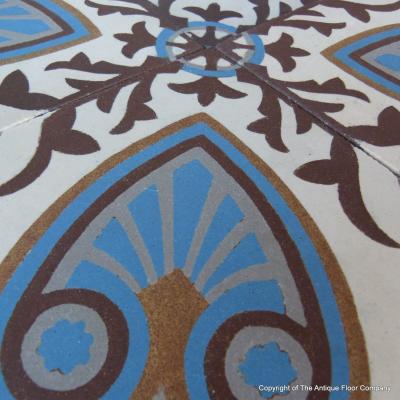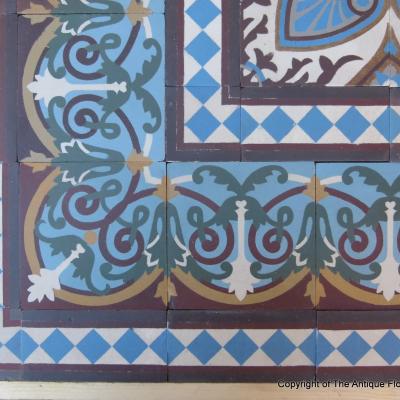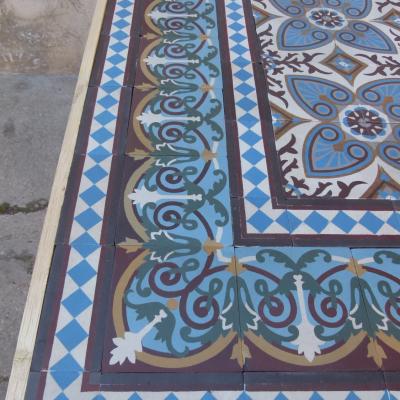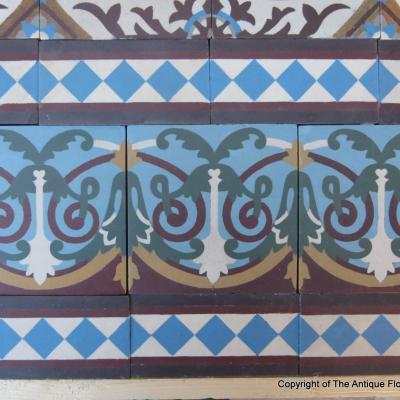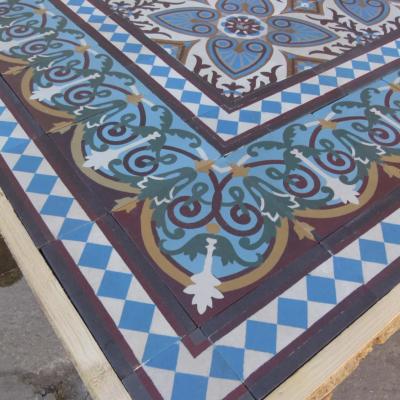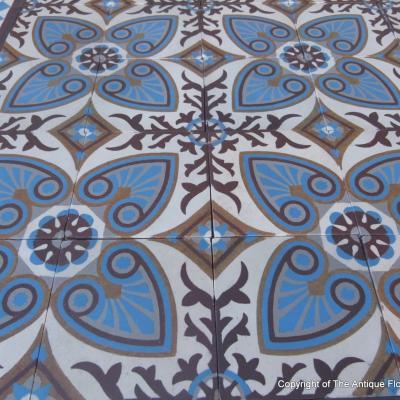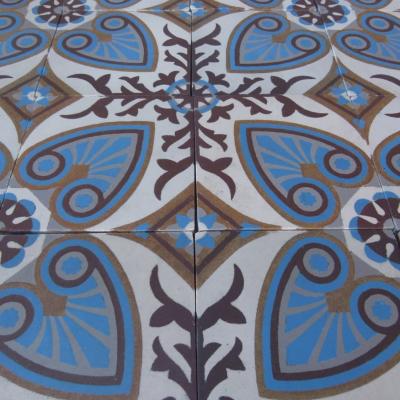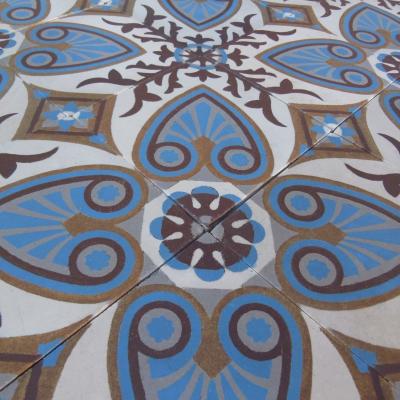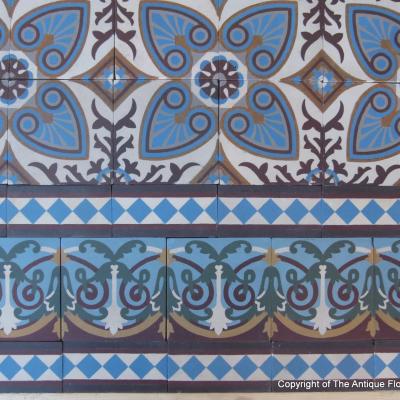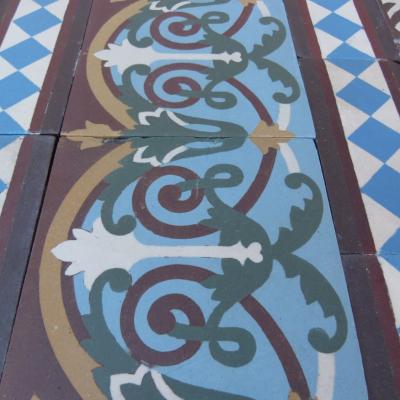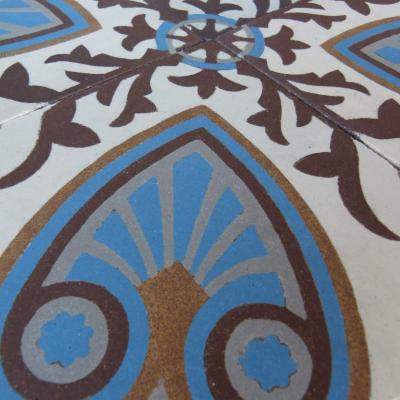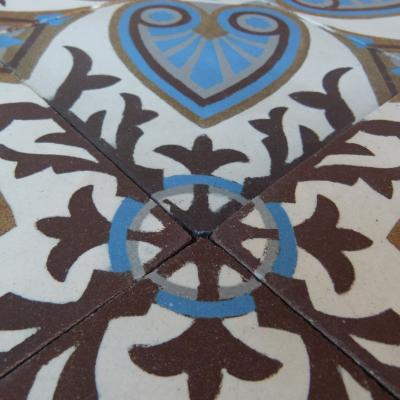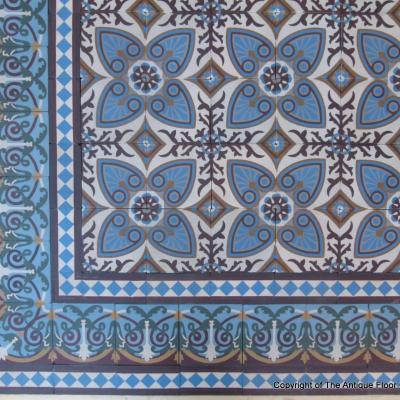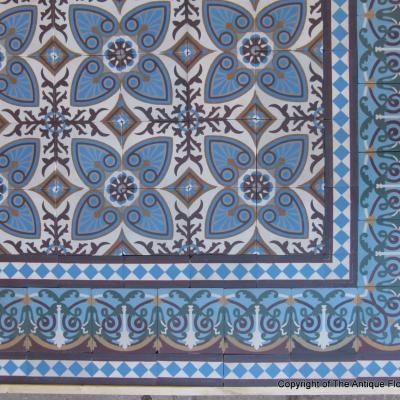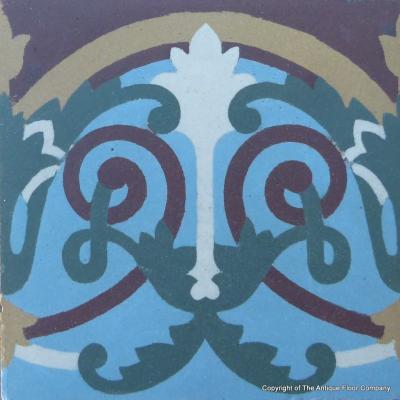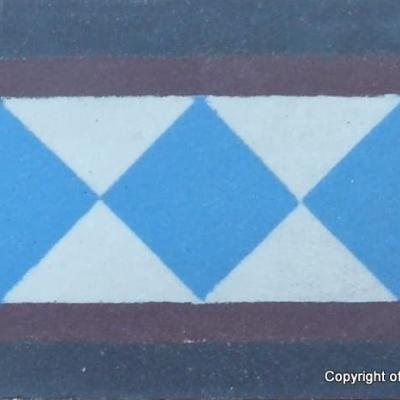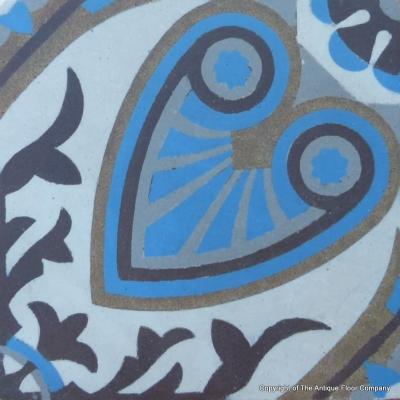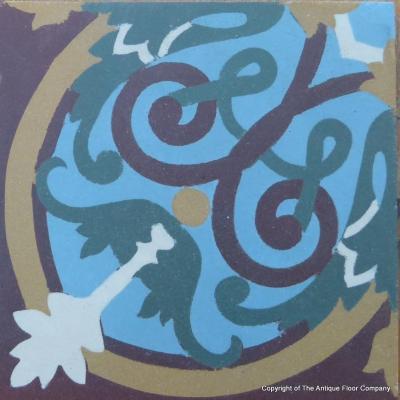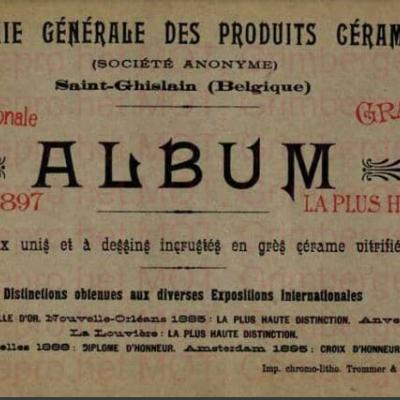Triple border St Ghislain ceramic dated 1895 - 16m2 / 172 sq ft.
A triple border antique Belgian ceramic now fully restored and ready to re-lay.
15cm square field and large borders with 15cm x 7.5cm half border tiles, all +/- 15mm thick,
Total surface area of 16m2 / 172 sq ft. the floor was manufactured in 1895 by Companie Generale des Produits Ceramiques Saint Ghislain (Belgigue) and we include in the photo gallery scans from their original catalogues showing the main field tile and half size border. The tiles are reverse stamped with the Saint Ghislain motif.
A quality and heavy ceramic the floor has cleaned superbly revealing crisp colours on a rich vegetal themed design. The gallery photos are of a randomly selected 1.2m2 section of the floor and is representative of the total surface.
We have recovered all eight small border corners for the half size borders and three for the large borders requiring that one be mitre cut by the tiler.
Fired at over 1,100 degrees the surfaces have virtually zero porosity and can be laid inside or outside of the home as sub zero winter or high summer temperatures will have no adverse effect on the tiles robustness. They can also be laid most efficiently with underfloor heating systems.
A beautiful floor that would be the heroine in any room.
Tile quantities, give or take one or two:-
FIELD - 565 tiles - 12.7m2 / 137 sq ft.
LARGE BORDER - 70 tiles plus 3 corners - 1.64m2 / 17.7 sq ft or 11 linear metres / 36 linear ft,
HALF BORDER - 140 tiles plus 8 corners - 1.64m2 / 17.7 sq ft or 22 linear metres / 72 linear ft.
NOTE
Antique tiles were most commonly made in single or two tile moulds. Before current computer automation methods their moulds were made my hand and the colour slips mixed by eye. Kiln temperatures could also be variable, as could the firing time. The result is that often tiles display subtle size and thickness variations and there can be tonal variations in colours, owing to the slip mixing and/or firing time. All of this makes these handmade tiles unique and adds to their charm. Some floors display their subtle variations in size and tones, some not, but when photographing we always take a random section of the floor so that it is representative of the whole. A tiler should always dry lay a section of the tiles to familiarise himself with them before starting to fix lay.
CL166



